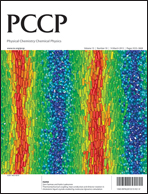The inclusion of Quantum Mechanical (QM) effects such as zero point energy (ZPE) and tunneling in simulations of chemical reactions, especially in the case of light atom transfer, is an important problem in computational chemistry. In this respect, the hydrogen exchange reaction and its isotopic variants constitute an excellent benchmark for the assessment of approximate QM methods. In particular, the recently developed ring polymer molecular dynamics (RPMD) technique has been demonstrated to give very good results for bimolecular chemical reactions in the gas phase. In this work, we have performed a detailed RPMD study of the H + H2 reaction and its isotopologues Mu + H2, D + H2 and Heμ + H2, at temperatures ranging from 200 to 1000 K. Thermal rate coefficients and kinetic isotope effects have been computed and compared with exact QM calculations as well as with quasiclassical trajectories and experiment. The agreement with the QM results is good for the heaviest isotopologues, with errors ranging from 15% to 45%, and excellent for Mu + H2, with errors below 15%. We have seen that RPMD is able to capture the ZPE effect very accurately, a desirable feature of any method based on molecular dynamics. We have also verified Richardson and Althorpe's prediction [J. O. Richardson and S. C. Althorpe, J. Chem. Phys., 2009, 131, 214106] that RPMD will overestimate thermal rates for asymmetric reactions and underestimate them for symmetric reactions in the deep tunneling regime. The ZPE effect along the reaction coordinate must be taken into account when assigning the reaction symmetry in the multidimensional case.

You have access to this article
 Please wait while we load your content...
Something went wrong. Try again?
Please wait while we load your content...
Something went wrong. Try again?


 Please wait while we load your content...
Please wait while we load your content...